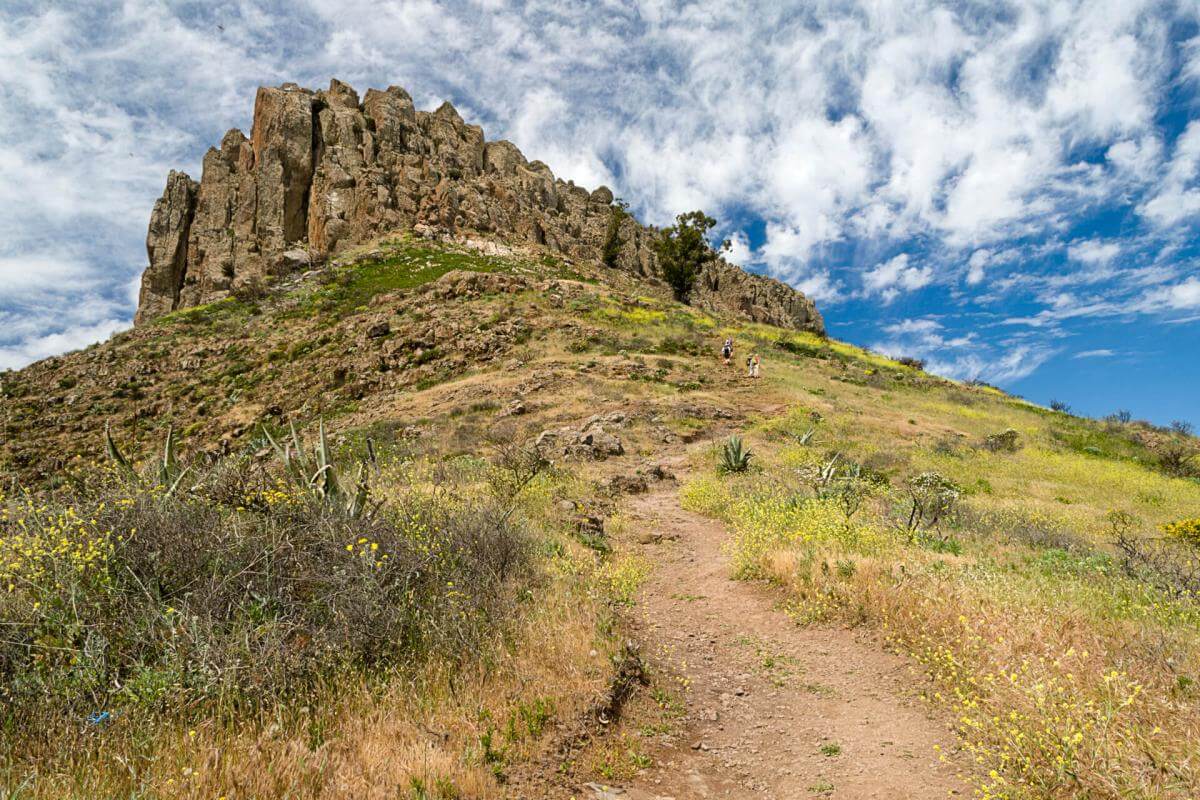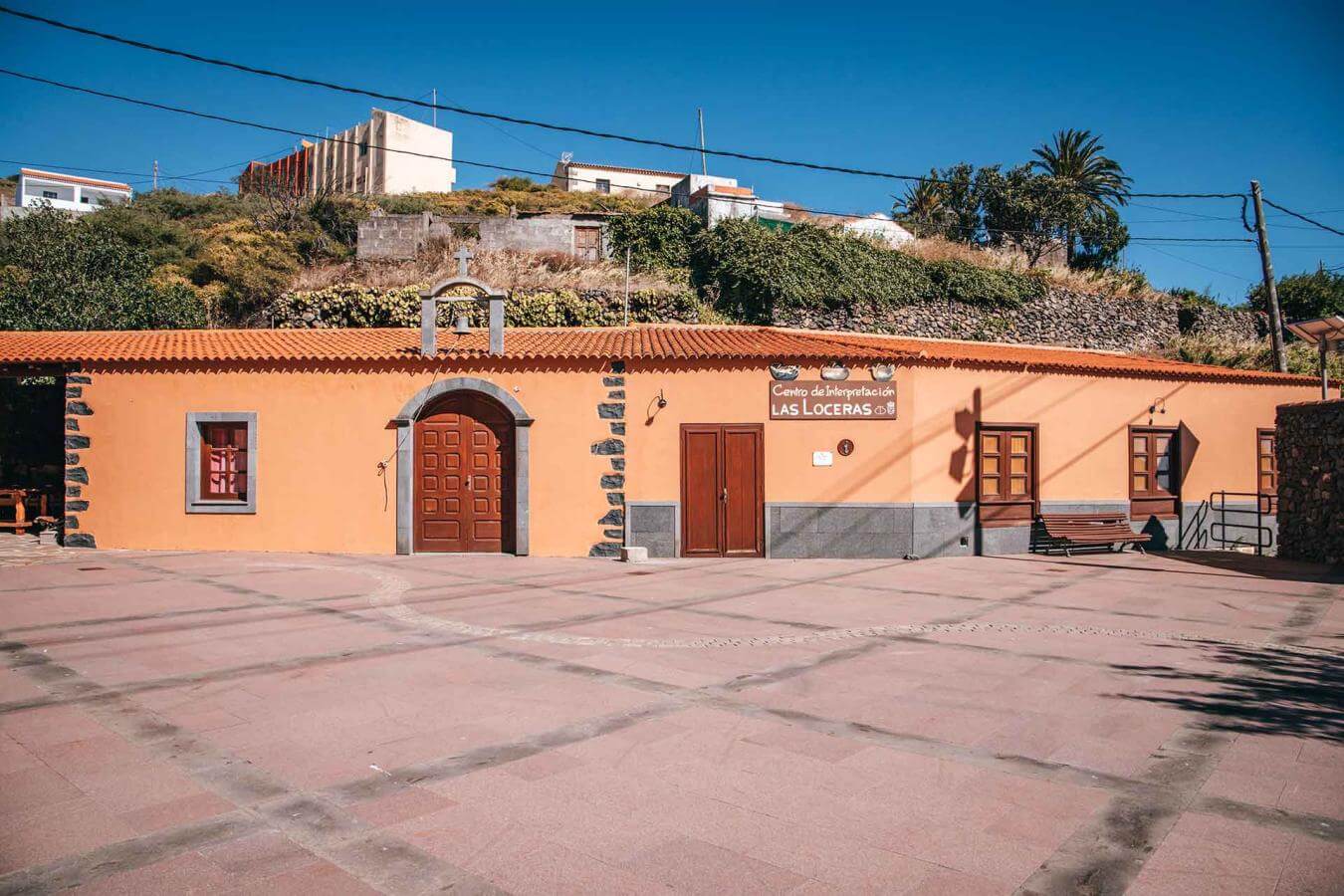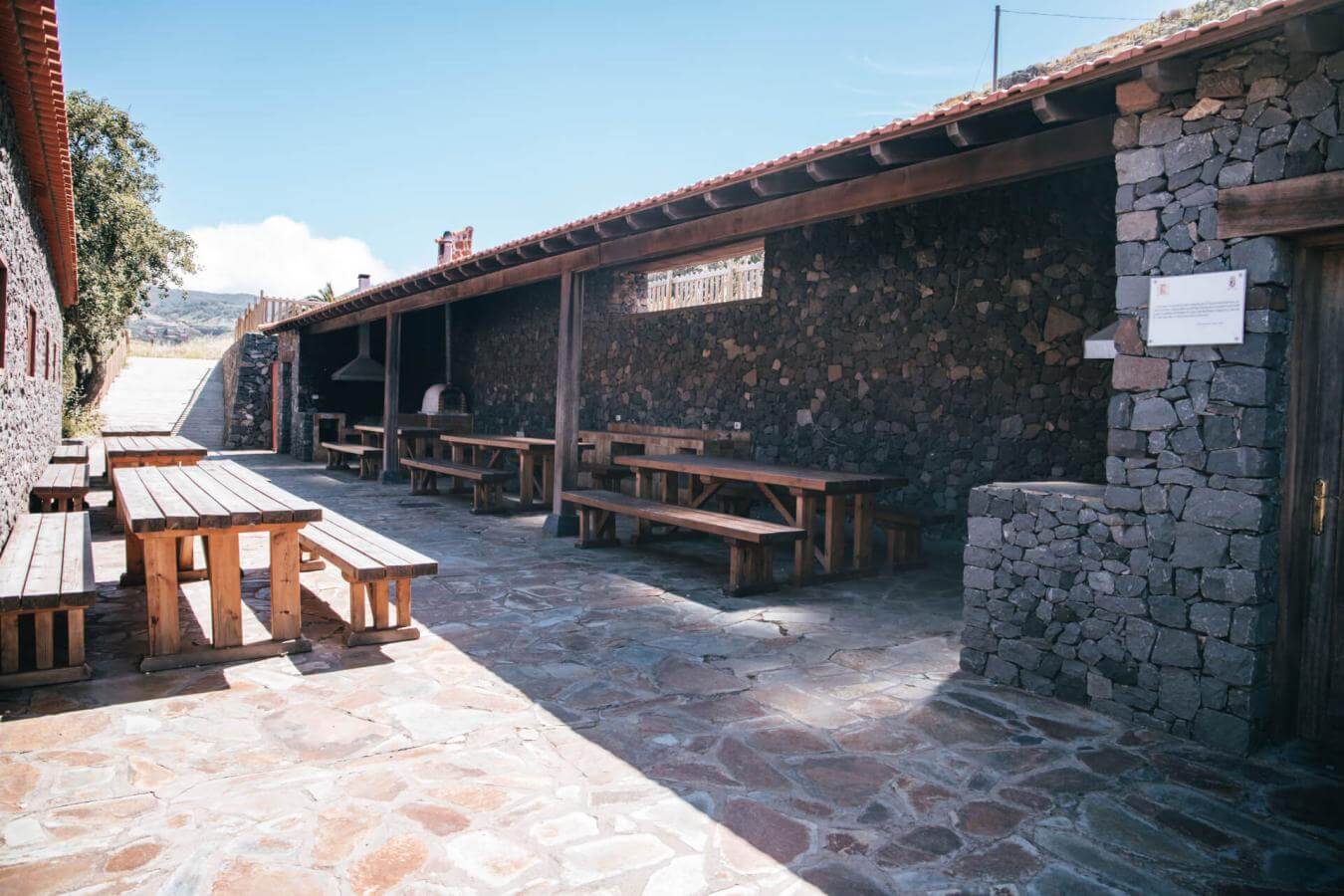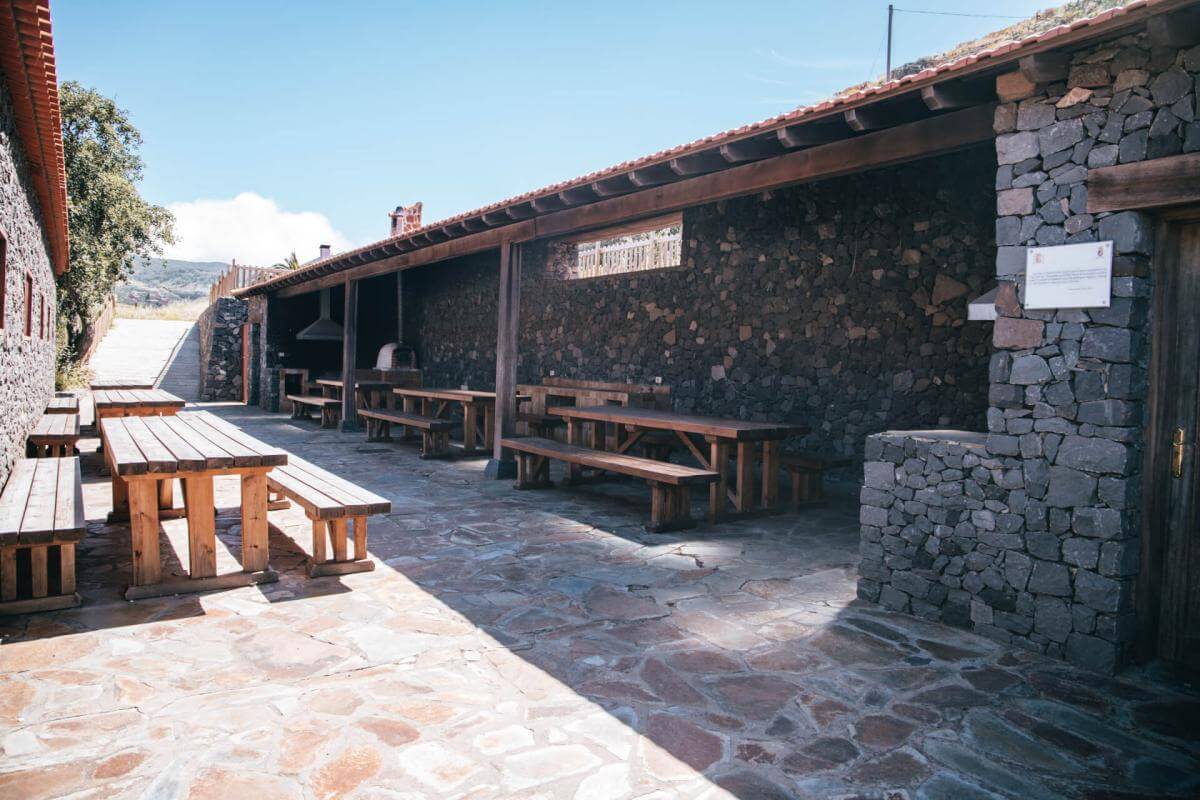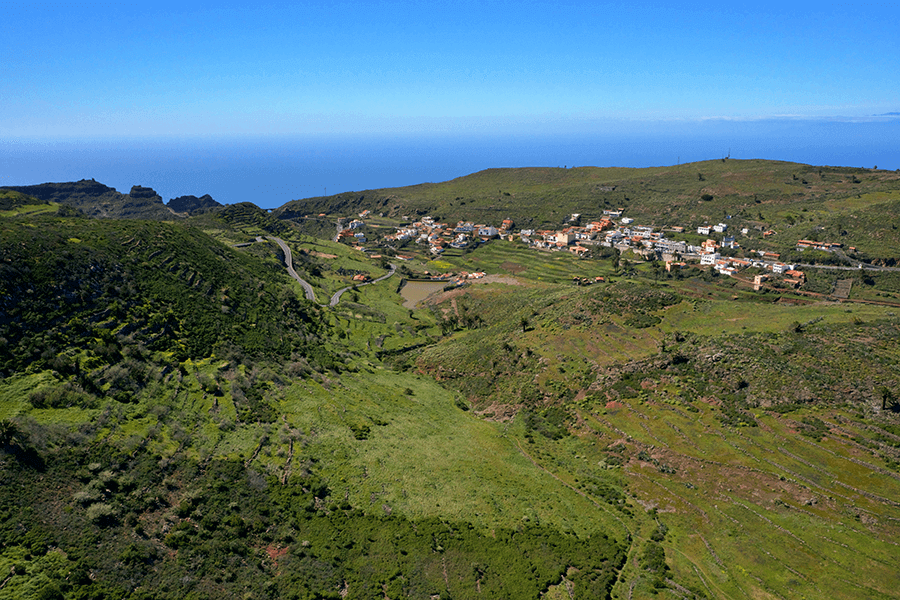
Distance from Point A to Point B: First stage / Arure – Las Hayas, 4.6 km
Arure offers an authentic immersion into the rural life of La Gomera. Its terraced fields, agricultural tradition and volcanic landscapes illustrate the deep bond between the community and the land. The route passes by the Ermita de Nuestra Señora de la Salud — central to the Fiesta del Ramo — and by the Arure Dam, essential for irrigating the valley.
From the Mirador del Santo, spectacular views open toward Taguluche and the Atlantic, and the path continues among family-run wineries, local flavours and traditional products such as almogrote, curd cheese and palm honey.
The trail then heads toward Las Hayas, following paths bordered by palm groves, vineyards and agricultural terraces that reveal the history and effort of generations. A stage that blends nature, culture and the most genuine essence of the island.
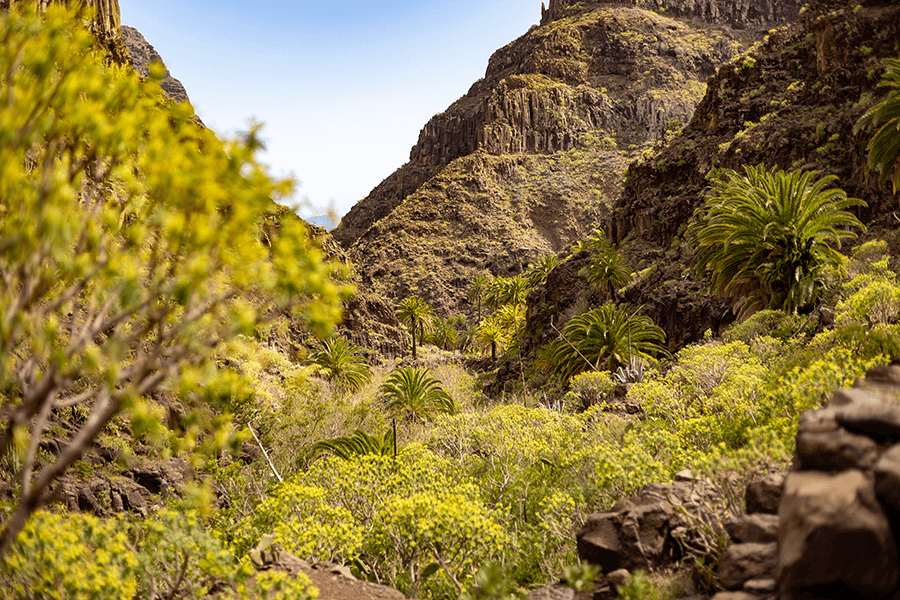
Distance from Point B to Point C: Second stage / Las Hayas – El Cercado, 1.8 km
The hamlet of Las Hayas, located at an altitude of 1,000 metres, preserves the agricultural essence of La Gomera with its terraced fields, palm groves and vineyards still in use today. It is an ideal place to enjoy rural tranquillity and local cuisine, with traditional restaurants such as Casa Efigenia or Amparo.
The route then climbs along the Camino del Elecho, offering views of the spectacular Arure Ravine, where volcanic rock and lush vegetation reveal the effort of generations who cultivated these steep slopes.
Before moving on, the Ermita de Las Hayas — the heart of the village — is well worth a stop. From here, the ascent begins toward Las Creces, one of the most impressive areas of Garajonay National Park, where laurel forests create a magical, ancient atmosphere. A stretch that encapsulates the coexistence of nature, history and Gomero tradition.
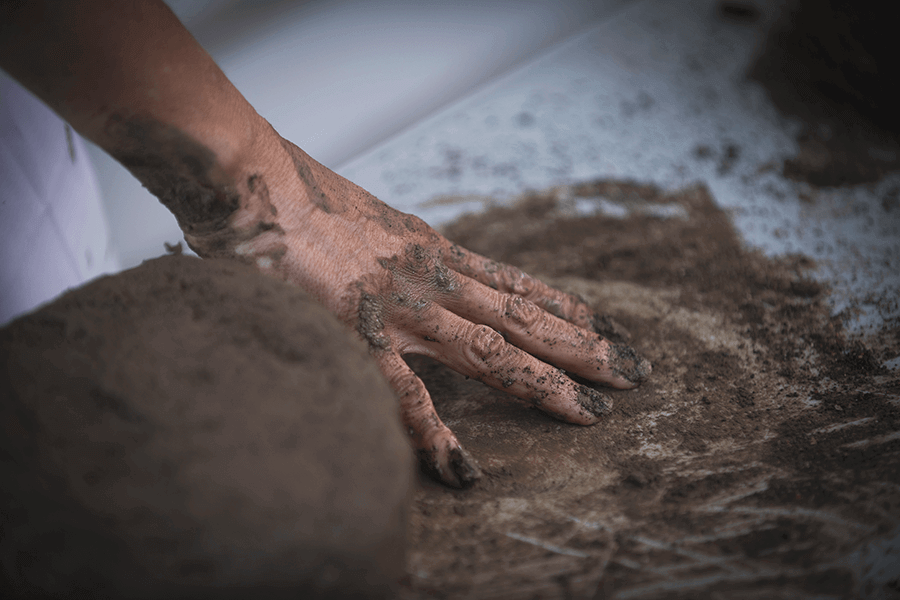
Distance from Point C to Point D: Third stage / El Cercado – Chipude, 2.2 km
El Cercado is one of the villages with the strongest identity in La Gomera, renowned for its traditional handmade pottery — a pre-Hispanic technique kept alive by the loceras, the island’s craftswomen. A visit to the Interpretation Centre and the artisanal workshops allows visitors to observe how these unique pieces are created and to purchase authentic products of Gomero heritage.
Before continuing toward Chipude, it is worth stopping at the local wineries, where wines made from native varieties such as Forastera Gomera are produced. Tastings in a rural setting and fresh wines with volcanic character complete this cultural experience.
A stop in El Cercado is, ultimately, an immersion in the craftsmanship, tradition and flavours that define the heart of the island.
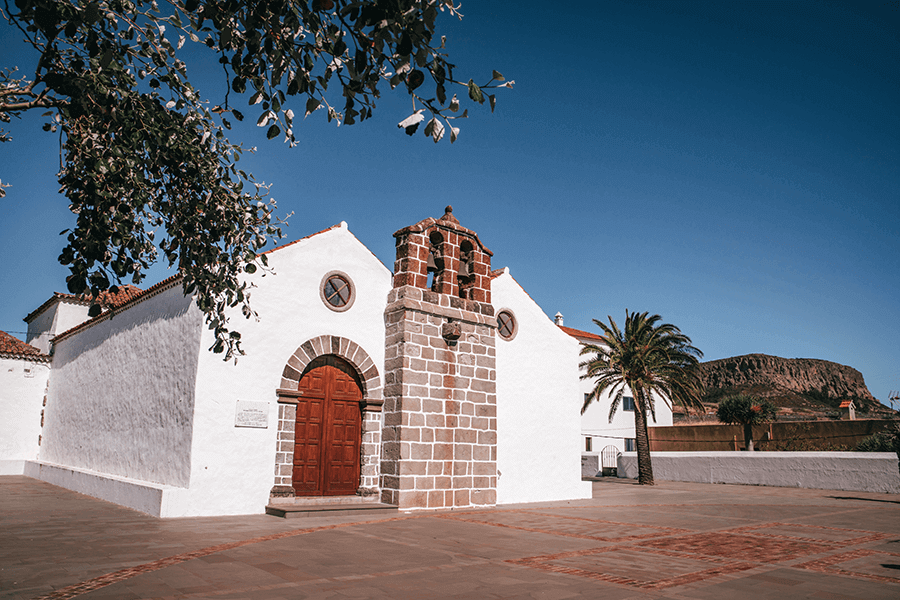
Distance from Point D to Point E: Fourth stage / Chipude – Igualero, 5.1 km
On the way to Chipude appears Temocodá, a site with Indigenous roots and high archaeological value that allows visitors to imagine how the ancient Gomero communities lived. Upon reaching Chipude — one of the oldest villages on the island — travellers encounter history, agricultural tradition and an exceptional natural setting.
The route includes the 16th-century Church of Nuestra Señora de la Candelaria and the La Vica Washhouses, a historic space that served as a social meeting point for generations. Also noteworthy is the Altos de Chipude Winery, where visitors can taste local wines made from native grape varieties.
The stage culminates at the impressive Fortaleza de Chipude, a volcanic formation used as a refuge and ceremonial site in pre-Hispanic times. The ascent, although demanding, rewards hikers with exceptional panoramic views and a direct connection to the most ancient and untamed landscape of La Gomera.
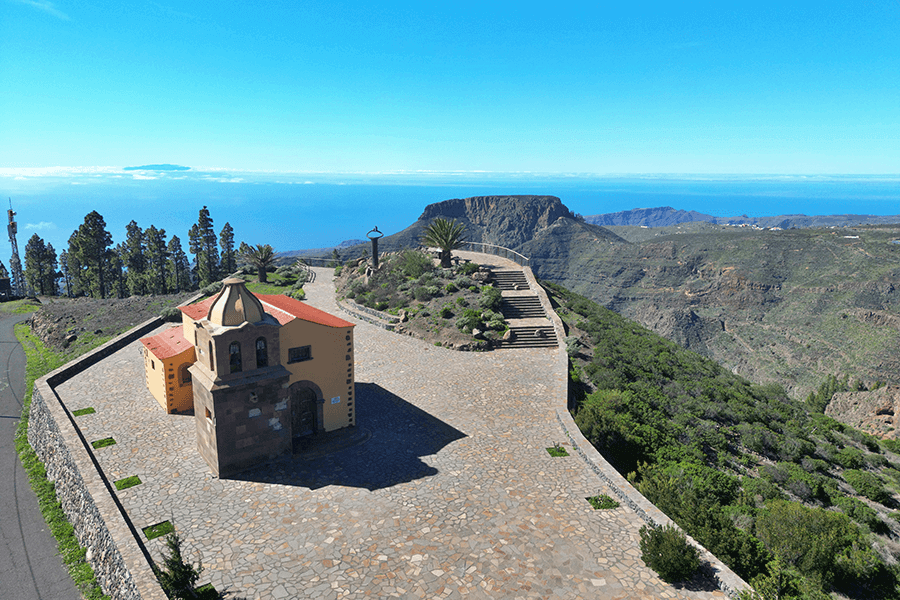
Distance from Point E to Point F: Fifth stage / Monument to the Silbo
The final stretch of the route reaches the Igualero viewpoint, where the Monument to the Silbo Gomero stands — a tribute to this unique whistled language, recognised by UNESCO as Intangible Cultural Heritage. It is an essential stop to understand how the people of La Gomera communicated across long distances, overcoming the island’s deep ravines.
Nearby, the Cumbres de Igualero Winery offers a final wine experience with varieties made from native grapes, in a high-mountain rural setting. A perfect ending that brings together landscape, culture and Gomero tradition.
- Never leave waste of any type lying around, including cigarette butts. Leftover food leads to a proliferation of rats and wild cats, which pose a serious threat to the fauna.
- Respect the animals. Do not bother them or feed them. If you see an injured specimen, you can call the emergency number: 112. Do not pick flowers or plants.
- Do not pick up or take away stones or any other item from the natural environment. And do not move them to pile them up into sadly famous 'towers'.
- Respect the signposting along trails. Leaving the set paths causes damage to the environment and could also be dangerous for you and anyone with you.
- It is safer to keep your pet on a lead.
- Try not to alter the peace of the environment with excessive noise (loud music, yelling, etc.).





